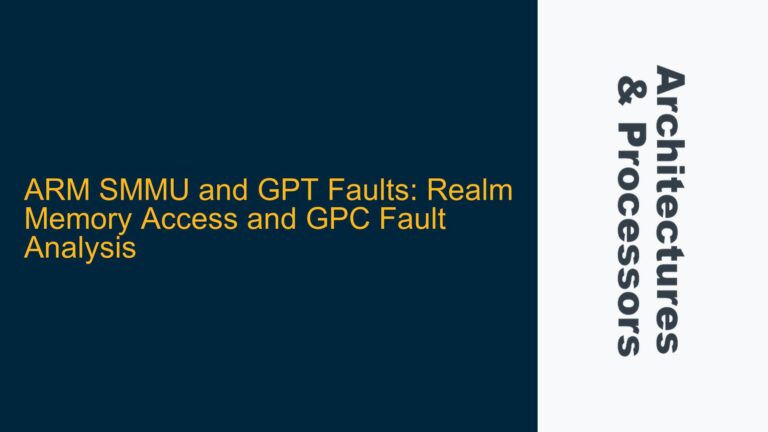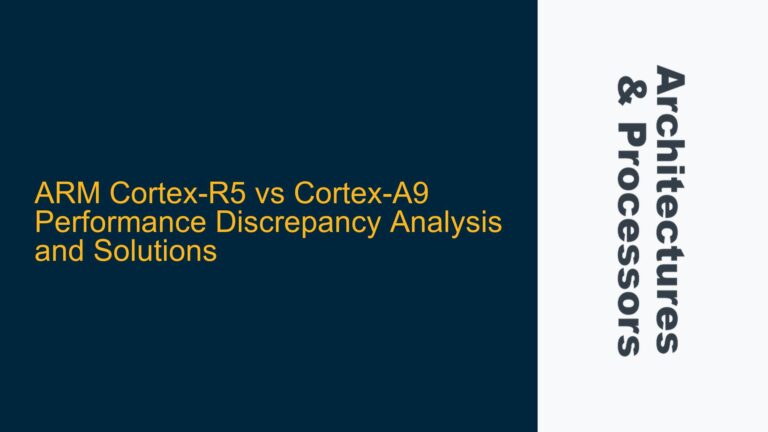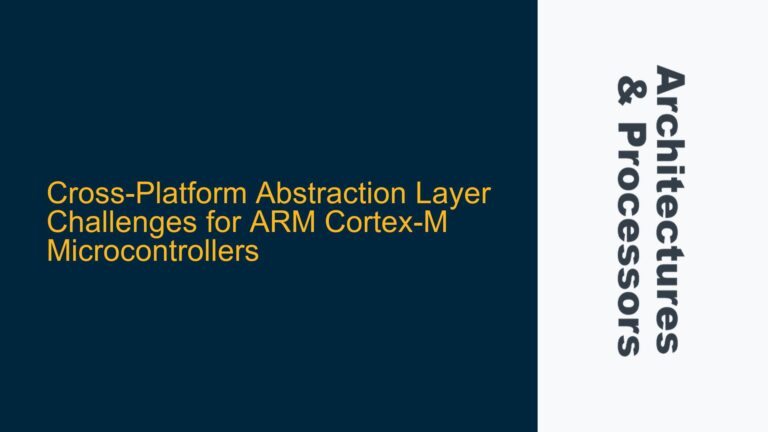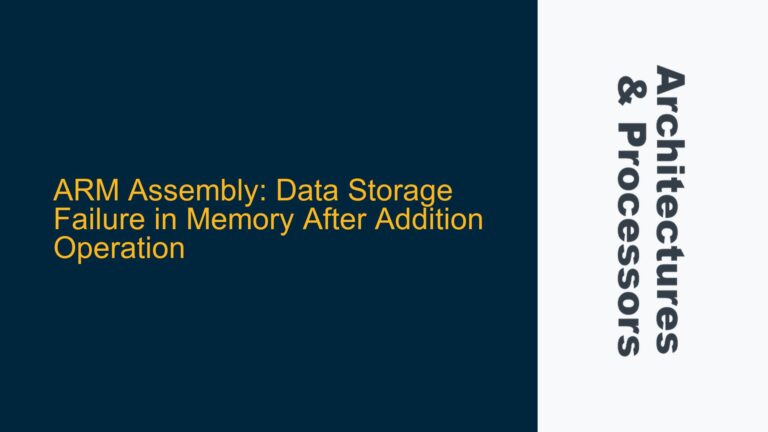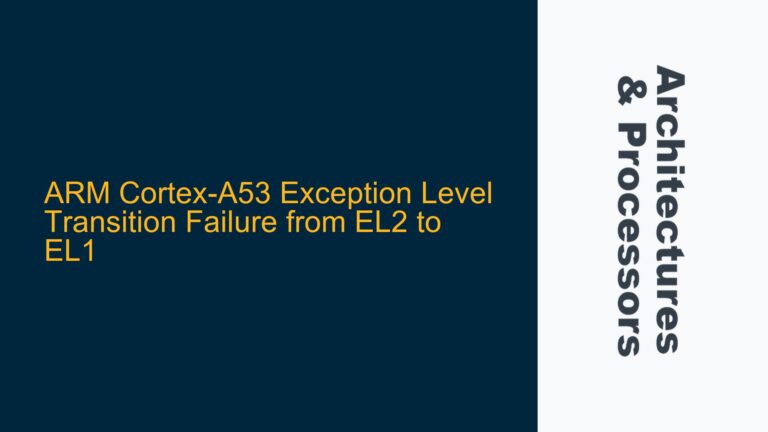MVN Instruction Energy Spike with Identical Source and Destination Registers
The MVN (Move Not) instruction in the ARM Cortex-M4 architecture is designed to perform a bitwise NOT operation on the source register and store the result in the destination register. Under normal circumstances, the MVN instruction operates efficiently, with energy consumption comparable to other logical operations. However, a peculiar anomaly arises when the source and destination registers are the same. In this specific scenario, the energy consumption of the MVN instruction spikes significantly compared to other instructions like MOV (Move), even when the MOV instruction is used with identical source and destination registers. This behavior is counterintuitive, as one might expect the energy consumption to remain consistent regardless of whether the source and destination registers are the same or different.
The anomaly is particularly noticeable on the ARM Cortex-M4 processor, as observed on the LPCXpresso 54114 development board. The energy consumption spike is not documented in the ARM architecture reference manuals, making it a subtle but important issue for developers who are optimizing for power efficiency in embedded systems. Understanding the root cause of this anomaly requires a deep dive into the microarchitectural implementation of the ARM Cortex-M4, specifically focusing on the data path and the logic gates involved in the execution of the MVN instruction.
Inverter Gate Activation and Data Path Contention in MVN Execution
The primary cause of the energy consumption spike in the MVN instruction when the source and destination registers are the same can be attributed to two key factors: the activation of inverter gates and data path contention within the processor’s execution unit. The MVN instruction, by its nature, requires the use of 32 inverter gates to perform the bitwise NOT operation on the 32-bit source register. These inverter gates are part of the processor’s ALU (Arithmetic Logic Unit) and are responsible for flipping each bit of the source register before writing the result to the destination register.
When the source and destination registers are different, the data flows smoothly through the ALU, with the inverter gates performing their operation without significant contention. However, when the source and destination registers are the same, the processor must handle a read-modify-write operation within a single clock cycle. This operation creates a contention in the data path, as the processor must simultaneously read from and write to the same register. The contention leads to additional switching activity in the inverter gates, as they must handle the intermediate state of the register being modified. This increased switching activity results in higher energy consumption.
Furthermore, the ARM Cortex-M4’s pipeline architecture exacerbates the issue. The pipeline stages, including fetch, decode, execute, and write-back, are designed to handle instructions with minimal stalls. However, the read-modify-write nature of the MVN instruction with identical source and destination registers introduces a pipeline hazard. The processor must ensure that the write-back stage does not overwrite the register before the execute stage has completed the bitwise NOT operation. This hazard resolution mechanism requires additional control logic, which further increases energy consumption.
Mitigating Energy Consumption with Register Renaming and Instruction Scheduling
To address the energy consumption spike associated with the MVN instruction when the source and destination registers are the same, developers can employ several strategies, including register renaming and instruction scheduling. Register renaming is a technique where the processor assigns a temporary register to hold the intermediate result of the MVN operation, thereby avoiding the read-modify-write contention. This technique effectively decouples the source and destination registers, allowing the processor to execute the MVN instruction without the additional energy overhead.
Instruction scheduling involves reordering the instructions in the program to minimize pipeline hazards and data path contention. By scheduling the MVN instruction such that it does not immediately follow or precede instructions that heavily use the same register, developers can reduce the likelihood of pipeline stalls and the associated energy consumption. Additionally, compilers can be configured to optimize the generated assembly code, ensuring that the MVN instruction is used efficiently and that register usage is minimized.
Another approach is to use the MOV instruction in combination with the NOT operation to achieve the same result as the MVN instruction. For example, instead of using MVN R0, R0, developers can use MOV R1, R0 followed by NOT R1, R1. This sequence of instructions avoids the read-modify-write contention and reduces energy consumption. However, this approach requires an additional register and increases the instruction count, which may not be feasible in all scenarios.
In conclusion, the energy consumption spike observed with the MVN instruction when the source and destination registers are the same is a result of inverter gate activation and data path contention within the ARM Cortex-M4 processor. By employing register renaming, instruction scheduling, and alternative instruction sequences, developers can mitigate this issue and optimize the power efficiency of their embedded systems. Understanding the underlying microarchitectural mechanisms is crucial for effective troubleshooting and optimization in ARM-based systems.


